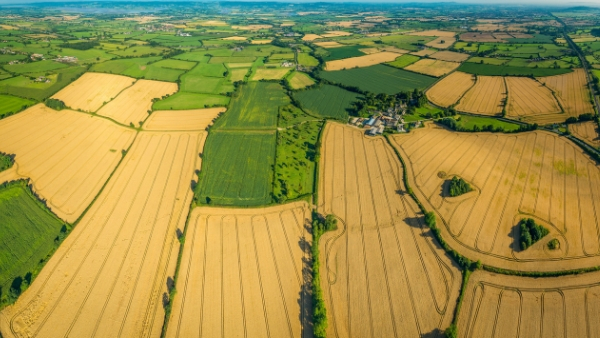Author
The concept of natural capital and its importance within our future British Agriculture Policy has become increasingly apparent over the past few years. It has progressed in that time from a “blue sky thinking” idea to an accepted asset of value, albeit one requiring significant further development.
As the Agriculture Bill makes its way through the Houses of Parliament and with the Brexit deadline looming large, many farming businesses are contemplating major change in order to survive in a completely new agricultural landscape. Against this backdrop it has become more important than ever that this new type of asset is identified, used, valued and protected. We consider how the law currently works and what is proposed to unlock the potential of these assets.
What is natural capital?
The notion of “natural capital” can generally be defined as the world’s stocks of natural assets, which include geology, soil, air, water and all living things. Similar in concept to the financial capital of a company or individual, natural capital needs proper regulation, not just from a resource perspective, but also to ensure the right level of enjoyment and exploration of these assets.
As we know all too well from the last 10 years, if financial capital is neglected, or is “over-enjoyed”, this can lead to significant difficulties, such as insolvency or bankruptcy.
The over-use of our natural environment can also lead to significant debt, albeit of a completely different nature.
Furthermore, poorly managed natural capital not only becomes a liability for our natural environment and ecosystems, but also becomes a financial liability. As with many assets, a lack of Government spending can lead to financial consequences.
How are natural capital assets currently harnessed?
The importance of a natural capital asset is not necessarily its monetary value, but its environmental benefit. With assets of this nature the real challenge is in finding a way to harness the benefit in a legally enforceable way.
The present system, based on ownership and/or occupation of land mainly derives from the Law of Property Act 1925 and the Land Registration Act 2002. Agreements relating to land take a variety of forms; much depends on what the parties are agreeing to do. Present “contracts of land” include a transfer of land, an easement, a restrictive covenant and a profit (the right to take something from someone’s land).
Natural capital projects, however, rarely fit easily into these structures. What we need is a purpose built legal structure designed for natural capital arrangements, i.e one which obliges landowners to do or refrain from doing something in relation to the land falling within their ownership.
Conservation Covenants
The Government has been aware of this deficiency for some years; at the beginning of 2012 DEFRA asked the Law Commission to research possible reform to the law on environmental agreements and prepare an industry consultation.
Following the consultation, the Law Commission published its report, “Conservation Covenants”, which focuses on agreements between landowners and public bodies, such as the Environment Agency and Natural England.
An example of such an agreement is one affecting an area of protected forestry to allow for the annual migration of an endangered species of bird. The public body, Natural England, may require the landowner to take steps to protect the woodland and ensure that the migration habits of the bird are not disrupted.
There is one particularly difficult legal issue which currently arises out of this example. Natural England will wish to ensure that for a long term conservation scheme like this, the landowner will not be able to rescind the agreement should he suddenly want to use the woodland for different purposes, which are incompatible with the scheme, or if he wishes to sell the woodland. Natural England will therefore want to ensure that the covenant attaches to the land, i.e. it binds the landowner’s successors.
In law, a covenant will generally only bind successors in title if:
- It is created for the benefit of neighbouring land (eg a promise by a landowner not to build above a certain height so that his or her neighbour’s view is preserved); and
- It is a promise not to do something (a restrictive obligation), rather than a promise to do something (a positive obligation);
Natural England will therefore find it difficult to create an enforceable binding contract, where one or more of the obligations are positive in nature.
In its report, the Law Commission suggested that a “Conservation Covenant” would be capable of being enforced against successors in title and would be registered by way of a local land charge, which already exists. Conservation Covenants would be capable of being discharged, should the character of the land to which it relates change, so that the covenant itself is no longer relevant. A Conservation Covenant would be enforceable by way of an injunction and compensation and could be modified in a manner similar to restrictive covenants – application to the Lands Tribunal.
Although the Law Commission’s report was positive and included draft legislation, it was published in the summer of 2014 and remains, 4 years later, simply a draft bill. So what can landowners do whilst we wait for a bespoke structure to be created?
Current options
To a great extent the parties to a natural capital arrangement enjoy freedom to contract as they see fit. The parties, whether it be landowner to landowner, local authority to landowner or landowner to public body are free to agree a specific arrangement that suits the needs of that particular scheme. Public bodies may decide not to be a party to an arrangement, but instead might enter into a specialist stewardship scheme agreement with the landowner, rewarding him financially for the conservation outcomes. Whilst the public body does not have an “interest in land” in the conservation land, it has a vested interest in ensuring that the scheme works and so will work with the landowner in implementing the outcomes.
Similarly, a local authority or a statutory water authority may wish to work with landowners around a water source or river, for example the blocking of drainage ditches using sustainable methods such as re-wetting peat bogs, enabling it to retain water and carbon to enable carob sequestration. An example of this is the Exmoor Mires Partnership run between South West Water, various local landowners and various local authorities, under which local landowners have received grants from Natural England for giving up their land for peat land restoration. The project aims to create a sustainable moorland use for agriculture, wild life and the public.
Any landowner thinking of entering any such scheme should obtain advice on the implications of the arrangement and how it might affect their ability to deal with their land in the future. The landowner will want to ensure that he has the ability to extract himself from any arrangement if it becomes financially unviable for him to continue. He might also need advice on the level of compensation payable for disturbance to farming operations or for the diminution in value of the land as a result of entering the scheme.
Print article

